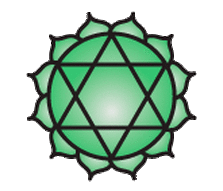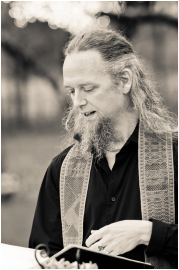
Resonance... "we are with or come back to the sounding" - That sounding, that quality, in the yogic texts is known as the 'naad', or the 'shabd'.
"Naad" translates as 'the cosmic sound' or 'vibrations of the cosmos'. The sound of the Cosmos can resonate within if one tunes into this energy, or as in acoustics... the unstruck string can resonate to the direct vibration or harmonic of another string in action.
"Shabd" is a little more esoteric even, although at its most superficial, it means 'sound'. Shabd employs the Naad (totally balanced universal sound) to remove the constrictions and distortions of the ego. In lay terms, the vibration is 'underneath' and at the source of the sound.
The root structure of the word gives a deeper definition; the Shabd transforms the practitioner by removing the barriers erected by the needs of the ego. Shabd comes from Sha- and –bd. Sha- means the expression of the ego, the attachments we identify with. -Bd means to cut out/off or to eradicate. The root meaning of Sha-bd is 'that which cuts the ego'. It is not just any sound; it is not just a sound of wisdom or a song of truth. It is a sound that cuts away the ego, which obstructs the truth from you.
Now, back to resonance... first, the simple physics then back to the acoustics. Resonance occurs when a system is able to store and easily transfer energy between two or more different storage modes - such as kinetic energy (if you're going yogic terminology, think of this as the Vayus - energy in motion) and potential energy (think of this as Shakti - all potential energy).
One familiar example is a playground swing, which acts as a pendulum. Pushing a person in a swing in time with the natural interval of the swing (its resonant frequency) will make the swing go higher and higher (maximum amplitude), while attempts to push the swing at a faster or slower tempo will result in smaller arcs.
This is because the energy the swing absorbs is maximized when the pushes are 'in phase' (resonate) with the swing's oscillations, while some of the swing's energy is actually extracted by the opposing force of the pushes when they are not (Inertia, or in yogic terms, one definition of Karma - unbidden work to be done).
Bear with me, we're getting somewhere. We've got a deep, underlying force we represent as sound or vibration brought into sound.... from the Big Bang, perhaps the ongoing Long Buzz. In our practice, we can use this deeper vibration to come into alignment - as in resonate - or to find higher vibrations and frequencies - harmonics. When we feel the resonance, when our unstruck strings simply choose to sing along because of the strength of the tone, then we are in union - one form of yoga.
Acoustic resonance is an important consideration for instrument builders. So should be the same consideration for those who practice asana. Most acoustic instruments use resonators, such as the strings and body of a violin (which mimics in shape and form the nude body of a woman - all stringed instruments started as mimics of the lover's body), the length of tube in a flute (or the length of the Sushumna, our central nadi and internal flow), or the shape of a drum membrane (the resilient and dynamic diaphragm).
Resonance occurs when a system is able to store and easily transfer energy between two or more different storage modes such as kinetic energy (vayus - movement of energy like wind) and potential energy (shakti - all potential energy) which can overcome the inertia (karma - work to be done).
Resonance occurs widely in nature, and is exploited in many man-made devices. It is the mechanism by which virtually all sinusoidal waves (bio-rhythms, lunar and solar cycles, menses and ovulation - all cycles that we measure) and vibrations are generated. Many sounds we hear, such as when hard objects of metal, glass, or wood are struck, are caused by brief resonant vibrations in the object.
The internal noise that normally overwhelms the mind (citta vritti) can be silenced and one can enjoy and hear the "anhad Naad" (unheard sound); this is sound of the cosmos within the mind. It is not to be confused with external vibrations - Naad is vibration within the mind.
And, unstruck, I say again - the sound doesn't start or diminish. It emanates and exists. Our fourth chakra, at the heart-center, uniting the upper triangle with the lower triangle, is known as Anahata - or 'the unstruck sound'. Use your heart, stop listening and start hearing.
Tune in, drop down, go deep, stay well. Give thanks and praise!



